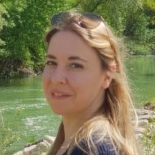Molecular Mechanisms of Brain Repair and Restoration after Stroke
A special issue of International Journal of Molecular Sciences (ISSN 1422-0067). This special issue belongs to the section "Molecular Neurobiology".
Deadline for manuscript submissions: closed (31 January 2022) | Viewed by 23789
Special Issue Editor
Interests: stroke; extrapiramidal syndromes; sex differences in neurological disorders
Special Issues, Collections and Topics in MDPI journals
Special Issue Information
Dear Colleagues,
Despite the results achieved by available reperfusion therapies, the outcomes after a stroke often remain poor. It has been observed that the restoration of pre-injury connections or the recruitment of new ones can encourage spontaneous functional recovery in days, weeks, or months. Neuroplasticity, as an intrinsic property of the brain in response to external and internal injuries and that allows functional and structural reorganization, is key to regeneration after injury. However, spontaneous recovery after a stroke is generally incomplete and depends on the ability of the brain to reestablish the structural and functional organization of neurovascular networks. It has been observed that not only are neurons actively involved in this process, but so are astrocytes, microglia, and cerebrovascular cells/cerebral vessels. Post-stroke neuroangiogenesis properties, such as inflammation, have been recognized as a compensatory mechanism to repair the damage caused by a stroke.
This Special Issue of the International Journal of Molecular Sciences aims to provide news regarding the mechanisms of brain restoration after a stroke. A better knowledge of brain repair mechanisms is essential to enhance said mechanisms and to improve the functional outcome of a patient after a stroke. Moreover, neuroplasticity could be maladaptive when resulting in negative effects such as loss of function. The information on the neurobiology of brain restoration may help to develop new therapies that enhance brain recovery after a stroke and that reduce maladaptive effects. Submissions highlighting each of these topics are welcome.
Dr. Valentina Arnao
Guest Editor
Manuscript Submission Information
Manuscripts should be submitted online at www.mdpi.com by registering and logging in to this website. Once you are registered, click here to go to the submission form. Manuscripts can be submitted until the deadline. All submissions that pass pre-check are peer-reviewed. Accepted papers will be published continuously in the journal (as soon as accepted) and will be listed together on the special issue website. Research articles, review articles as well as short communications are invited. For planned papers, a title and short abstract (about 100 words) can be sent to the Editorial Office for announcement on this website.
Submitted manuscripts should not have been published previously, nor be under consideration for publication elsewhere (except conference proceedings papers). All manuscripts are thoroughly refereed through a single-blind peer-review process. A guide for authors and other relevant information for submission of manuscripts is available on the Instructions for Authors page. International Journal of Molecular Sciences is an international peer-reviewed open access semimonthly journal published by MDPI.
Please visit the Instructions for Authors page before submitting a manuscript. There is an Article Processing Charge (APC) for publication in this open access journal. For details about the APC please see here. Submitted papers should be well formatted and use good English. Authors may use MDPI's English editing service prior to publication or during author revisions.
Keywords
- Stroke
- Brain repair
- Restoration
- Neuroplasticity
- Rehabilitation after stroke
- Inflammation
- Neuroangiogenesis






